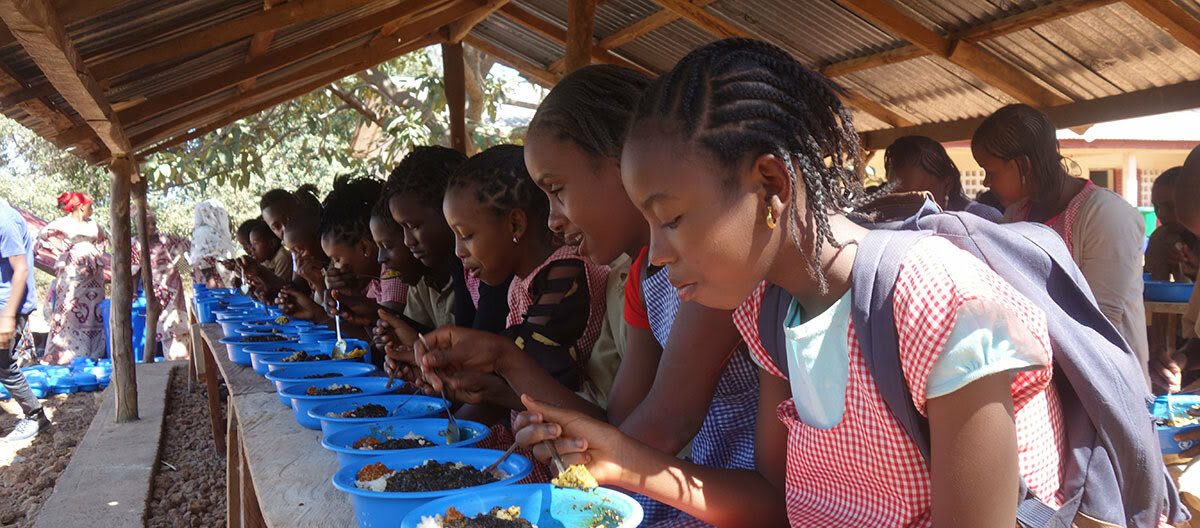By Mike Visser | Special Feature, Africa Contemporary Farmers Magazine
Conakry, Guinea – In the heart of West Africa, where fertile lands and rich cultural traditions offer a backdrop of potential, a new story is unfolding—one of partnership, perseverance, and promise. The United Nations World Food Programme (WFP), in collaboration with the Korea International Cooperation Agency (KOICA), is spearheading a transformative initiative that aims to reshape Guinea’s rural landscape and fortify its most vulnerable communities against hunger and hardship.
With an investment of US$4 million, KOICA has partnered with WFP to bolster Guinea’s agricultural sector by developing a resilient rice value chain—a lifeline for rural farmers and families dependent on local production. This joint venture is far more than a financial contribution; it’s a model of integrated, community-based development that prioritizes food security, self-sufficiency, and climate resilience.
“This partnership with KOICA is a game-changer for communities in Guinea,” said Hyoung-Joon Lim, WFP’s Country Director for Guinea. “More children are enrolling in schools because of nutritious school meals, households are creating sustainable livelihoods through rice production, and communities have improved access to vital nutrition services.”
📈 The Urgent Need: A Nation of Potential Facing Pressing Challenges
Despite Guinea’s significant mineral wealth and vast agricultural potential, the country grapples with profound food security issues. Recent data from WFP shows that approximately 35.8% of Guinean households experience moderate food insecurity, while 34% of the population—about 4.8 million people—lack reliable access to safe, nutritious food.
Agriculture remains the backbone of the rural economy, but smallholder farmers often face challenges such as outdated farming techniques, poor infrastructure, limited market access, and unreliable climate patterns. Guinea, as a result, continues to rely heavily on imported food staples—particularly rice.
This dependency is not only costly but leaves the nation vulnerable to global supply chain shocks and price fluctuations.

🌱 The Solution: Zero Hunger Villages (ZHV) and the Rise of Community Resilience
To tackle these systemic challenges, the KOICA-WFP collaboration has scaled up the Zero Hunger Village (ZHV) initiative. This holistic program targets every level of the rural value chain, from school feeding and nutrition to farmer training, community asset creation, and market access.
The core principle of ZHV is empowerment—equipping local communities with the tools, knowledge, and infrastructure to thrive without long-term dependence on aid.
“The Zero Hunger Village model is not about short-term relief. It’s about lasting transformation,” said a WFP field officer in the Kankan region. “When communities take ownership of their own development journey, the impact is deeper and more sustainable.”
At the heart of this transformation is the Tong-il G rice variety, introduced with KOICA’s support. This high-yielding, short-cycle seed is better suited to Guinea’s climate than traditional varieties and has significantly improved harvest outcomes in project areas.
In villages like Farabana, Bananko, and Gbodou, farmers now report greater productivity, higher incomes, and reduced hunger, thanks to this innovation.
🍽️ Feeding Minds and Bodies: School Meals and Nutrition for the Vulnerable
One of the most impactful components of the KOICA-WFP program is its contribution to locally sourced school meal programs. By integrating local rice and produce into school feeding schemes, the initiative not only supports children’s health and education but also strengthens local economies and farming cooperatives.
“I used to send my son to school with just a small piece of bread,” said Mariama, a mother in Bananko. “Now he gets a hot meal at school made with rice from our own village. He’s learning better, growing stronger, and even helping on the farm.”
Beyond schoolchildren, the program supports pregnant and breastfeeding women and malnourished children through targeted nutrition services—ensuring that those most at risk are not left behind.
🛠️ Building the Future: Capacity, Markets, and Self-Reliance
The KOICA funds are also being used to build essential infrastructure, such as irrigation systems, community granaries, and food storage facilities. These assets not only increase food availability but improve food safety, reduce post-harvest losses, and enable better planning for lean seasons.
Equally important is the investment in training and capacity building. From agricultural extension officers to local cooperatives, actors across the rice value chain are being trained in climate-smart farming practices, cooperative governance, business skills, and nutrition awareness.
Through enhanced market linkages, farmers can now sell their surplus rice at fair prices, creating income streams that uplift entire households and communities.
🤝 Looking Ahead: A Vision for 500 Zero Hunger Villages
Following a recent field visit to Guinea, Yoojin Hwang, Deputy Representative of KOICA Senegal, praised the project’s progress and reaffirmed KOICA’s commitment to expanding the initiative.
“We are very pleased to see that the use of Korean Tong-il G rice seeds is contributing to increased agricultural productivity and improved children’s nutrition,” said Hwang. “KOICA will continue working with WFP to realize the dream of establishing more than 500 Zero Hunger Villages across Guinea.”
🌍 A Blueprint for Africa?
As the world confronts a growing hunger crisis exacerbated by climate change, conflict, and economic instability, the KOICA-WFP partnership in Guinea offers a scalable and replicable model for rural development. Its emphasis on community ownership, sustainable agriculture, and integrated support systems makes it a potential blueprint for other nations seeking long-term food security solutions.
For Guinea, the seeds of change have already been planted—and with continued collaboration, innovation, and determination, the harvest of a hunger-free future may not be far off.
Sidebar: At a Glance – Impact of KOICA-WFP Partnership in Guinea
- 💰 US$4 million invested in food security and livelihoods
- 🌾 Introduction of Tong-il G rice seed improving yields
- 🍛 Thousands of children now receiving locally sourced school meals
- 👩🌾 Smallholder farmers gaining access to training and markets
- 🏫 Improved school attendance and educational outcomes
- 🔧 Creation of food production assets and market infrastructure
- 📍 Project sites: Farabana, Bananko, Gbodou (Kankan region)
- 🎯 Target: Establish over 500 Zero Hunger Villages
Really enjoyed this! Your perspective is refreshing and thought-provoking. Keep it up!
Your perspective is refreshing and thought-provoking. Keep it up!